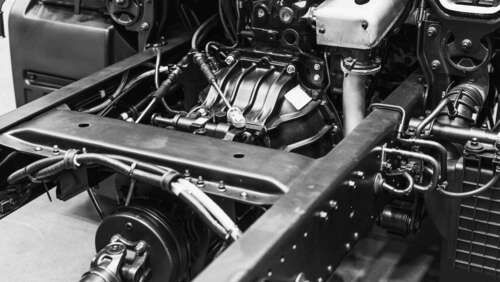
Despite the term “drivetrain” sounding like a singular thing, it’s actually a different grouping of components (and there’s some overlap) — the transmission, differential, driveshaft, axles, and wheels. However, another part we haven’t touched on yet that also belongs to the drivetrain is the Constant Velocity (CV) joints. These CV joints sit at each end of the drive shaft and not only connect the wheels to the axles (and transmission) but transfer torque to them as well.
So, what didn’t we list that we’ve already discussed? The engine. The motor is a part of the powertrain but not a part of the drivetrain.
In essence, the drivetrain is just a part of the overall powertrain, but the motor is — dare we say — the head of the train, and without it, nothing else down the line works. Therefore, all the other parts of the drivetrain combine to make up the powertrain, which, as a unit, “transforms kinetic energy into propulsion motion,” says authorized auto dealer Maxwell Ford.
Think of the powertrain as the all-encompassing umbrella term that includes all the moving parts while the engine and the drivetrain sit happily underneath. But wait! What about electric cars? While they have both a powertrain and a drivetrain, they differ from vehicles with internal combustion engines because most EVs don’t have multi-speed transmissions. That, however, is a topic for another time.

